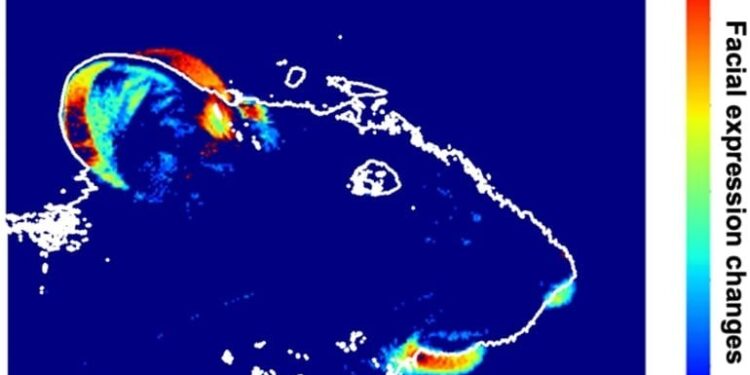Summary: A newly recognized serotonin pathway that originates from the median raphe nucleus acts in opposition to the reward/aversion pathway within the close by dorsal raphe nucleus. The findings might pave the way in which for the event of latest remedies for main despair, habit, and different issues related to serotonin.
Source: Hokkaido University
Scientists in Japan have recognized a nerve pathway concerned within the processing of rewarding and distressing stimuli and conditions in mice.
The new pathway, originating in a bundle of mind stem nerve fibres known as the median raphe nucleus, acts in opposition to a beforehand recognized reward/aversion pathway that originates within the close by dorsal raphe nucleus.
The findings, printed by scientists at Hokkaido University and Kyoto University with their colleagues within the journal Nature Communications, might have implications for growing drug remedies for numerous psychological issues, together with addictions and main despair.
Previous research had already revealed that activating serotonin-producing nerve fibres from the dorsal raphe nucleus within the mind stem of mice results in the pleasurable feeling related to reward.
However, selective serotonin reuptake inhibitors (SSRIs), antidepressant medicine that enhance serotonin ranges within the mind, fail to exert clear emotions of reward and to deal with the lack of means to really feel pleasure related to despair.
This means that there are different serotonin-producing nerve pathways within the mind related to the emotions of reward and aversion.
To additional research the reward and aversion nerve pathways of the mind, Hokkaido University neuropharmacologist Yu Ohmura and Kyoto University pharmacologist Kazuki Nagayasu, along with colleagues at a number of universities in Japan, targeted their consideration on the median raphe nucleus.
This area has not acquired as a lot analysis consideration as its mind stem neighbour, the dorsal raphe nucleus, though it is also a supply of serotonergic nerve fibres.
The scientists carried out all kinds of exams to measure exercise of serotonin neurons in mice, in response to stimulating and inhibiting the median raphe, through the use of fluorescent proteins that detect entry of calcium ions, a proxy of neuronal activation in a cell-type particular method.
They discovered that, for instance, pinching a mouse’s tail—an disagreeable stimulus—elevated calcium-dependent fluorescence within the serotonin neurons of the median raphe. Giving mice a deal with akin to sugar, alternatively, decreased median raphe serotonin fluorescence.

Also, straight stimulating or inhibiting the median raphe nucleus, utilizing a genetic method involving mild, led to aversive or reward-seeking behaviours, akin to avoiding or wanting to remain in a chamber—relying on the kind of stimulus utilized.
The workforce additionally carried out exams to find the place the switched-on serotonergic nerve fibres of the median raphe had been sending alerts to and located an necessary reference to the mind stem’s interpenduncular nucleus.
They additionally recognized serotonin receptors inside this nucleus that had been concerned within the aversive properties related to median raphe serotonergic exercise.
Further analysis is required to totally elucidate this pathway and others associated to rewarding and aversive emotions and behaviours.
“These new insights could lead to a better understanding of the biological basis of mental disorders where aberrant processing of rewards and aversive information occur, such as in drug addiction and major depressive disorder,” says Ohmura.
About this serotonin and neuroscience analysis information
Author: Sohail Keegan Pinto
Source: Hokkaido University
Contact: Sohail Keegan Pinto – Hokkaido University
Image: The picture is credited to Yu Ohmura
Original Research: Open entry.
“Median raphe serotonergic neurons projecting to the interpeduncular nucleus control preference and aversion” by Yu Ohmura et al. Nature Communications
Abstract
Median raphe serotonergic neurons projecting to the interpeduncular nucleus management choice and aversion
Appropriate processing of reward and aversive info is important for survival. Although a vital position of serotonergic neurons within the dorsal raphe nucleus (DRN) in reward processing has been proven, the dearth of rewarding results with selective serotonin reuptake inhibitors (SSRIs) implies the presence of a discrete serotonergic system enjoying an reverse position to the DRN within the processing of reward and aversive stimuli.
Here, we demonstrated that serotonergic neurons within the median raphe nucleus (MRN) of mice course of reward and aversive info in reverse instructions to DRN serotonergic neurons.
We additional recognized MRN serotonergic neurons, together with these projecting to the interpeduncular nucleus (5-HTMRN→IPN), as a key mediator of reward and aversive stimuli.
Moreover, 5-HT receptors, together with 5-HT2A receptors within the interpeduncular nucleus, are concerned within the aversive properties of MRN serotonergic neural exercise.
Our findings revealed an important perform of MRN serotonergic neurons, together with 5-HTMRN→IPN, within the processing of reward and aversive stimuli.














Discussion about this post